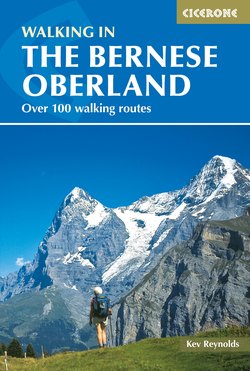Читать книгу Walking in the Bernese Oberland - Kev Reynolds - Страница 18
На сайте Литреса книга снята с продажи.
ОглавлениеROUTE 6
Grimsel Hospice (1980m) – Lauteraar Hut (2392m)
| Start | Grimsel Hospice (1980m) |
| Distance | 10km (one way) |
| Height gain | 483m |
| Height loss | 71m |
| Grade | 3 |
| Time | 4–4½hrs |
| Location | West of the Grimsel Pass |
Originally known as the Pavilion Dolfus, the Lauteraar Hut sits on a grassy shelf overlooking the concordia of two major glacier systems; the Lauteraargletscher and the Finsteraargletscher which combine to become the Unteraargletscher. This serves as a highway into the very heart of the Bernese Alps. As their names suggest, the Lauteraar Glacier is headed by the Lauteraarhorn, the Finsteraar Glacier by the Finsteraarhorn. Also in view are the Schreckhorn and Oberaarhorn and a range of mountain walls and pinnacles.
This approach route skirts the dismal-looking Grimselsee, then heads along the rubble-strewn Unteraargletscher through a landscape more reminiscent of the barren Karakoram than of the pastoral Alps. But this raw, monochrome mountainscape has great attraction for many of us, and serves as a direct contrast to that enjoyed on the vast majority of walks included in this guide. Although the route wanders along a glacier, it should be pointed out that this glacier is likely to be roughly carpeted with morainic debris. No crevasses were detected when the walk was researched, but it is important to follow marker poles and cairns (not always easy to see) for the precise up-to-date route. In poor visibility the correct point at which the glacier is left may be difficult to locate.
From the Grimsel Hospice (reached by postbus from Meiringen) go down a series of steps and across the top of the reservoir’s dam wall. Climbing up the far side the path takes you high above the northern side of the Grimselsee, through a tunnel and out to steep, shrub-covered hillsides heading west. It’s a fine walk, much of it among clusters of alpenrose, passing below cascades, then the Eldorado slabs that are very popular with climbers.
Buddhist prayer flags bring a touch of the Himalaya to the Unteraargletscher
At the far end of the lake (2–2½hrs) the path takes you onto the moraine-covered Unteraargletscher. From here the way is marked with poles and cairns on the right-hand (northern) side of the glacier, meandering to find the easiest route. On the glacier has been built a huge chorten, complete with prayer flags, which adds to the Himalayan, or Karakoram-like atmosphere.
In the first half of the 19th century the Swiss glaciologist, Louis Agassiz, built a shelter on the Unteraargletscher as a base for his studies. The so-called Hôtel des Neuchatelois consisted of ‘a large cave on a rock-island in the middle of the glacier, formed by a huge overhanging block of mica schist, made more weatherproof by a wall of stones, and more comfortable by layers of grass and oilcloth’. In the summer of 1841, James David Forbes, the young Scots geologist, adopted the ‘hotel’ as his base not only for scientific studies, but also to make the fourth ascent (and first British ascent) of the Jungfrau.
About 1hr or so along the glacier you come to a point where you can see the valley’s right-hand wall has a shallow indent with grass-covered slabs at its western end. A sign and marker poles direct you off the glacier here, then with painted waymarks on rocks you pick a route up rough slopes to find a clear path leading upvalley. Crossing one or two streams gain a grassy knoll and at last come to the Lauteraar Hut, which is not seen until just before you reach it.
The SAC-owned Lauteraar Hut has 40 places and a resident guardian during July and September when a full meals service is offered (Tel 033 973 11 10 www.lauteraarhuette.ch). Views are remarkable and justify the effort involved in getting here.
